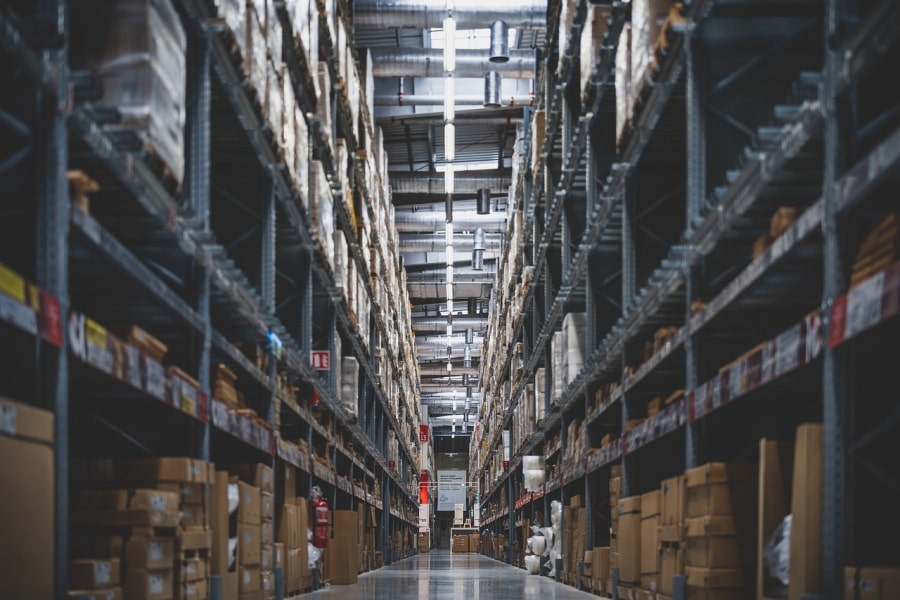A strategic advantage for e-commerce: Outsourcing warehouse capacity to fulfillment centers
Written by
Editorial TeamPublished on
Unlock the secret to e-commerce success with fulfillment centers! These dynamic hubs not only simplify storage and shipping but also supercharge your business with cutting-edge technology and scalable solutions, empowering you to focus on growth while staying ahead in the fast-paced digital marketplace. (Ad)

(Image Source: www.pixabay.com)
Commercial collaboration
As the e-commerce sector continues its rapid growth, businesses face a crucial question: how to scale efficiently without straining resources. The answer for many lies in outsourcing storage capacities to fulfillment centers. These facilities provide not only storage but also packing and shipping, enabling online stores to meet growing demand while keeping operations lean.
Fulfillment centers handle storage and logistics. Unlike traditional warehouses, they specialize in dynamic inventory management, order processing, and last-mile delivery – all tailored to the demands of e-commerce. This allows businesses to avoid the capital investment and operational complexity of managing their own warehouse infrastructure. Moreover, the expertise and technology employed by fulfillment centers often exceed what individual companies can afford to implement internally.
E-commerce brings challenges such as seasonal spikes, international expansion, and the pressure for quick delivery. Fulfillment centers address these issues by providing scalable, on-demand logistics solutions. For businesses, this means less time spent on operations and more focus on strategic priorities. By outsourcing, companies not only save money but also gain a competitive edge in an increasingly fast-paced market.
Authentica Fulfillment, a prominent example in this space, showcases the advantages of outsourcing. By managing diverse services under one roof – from inventory storage to product customization and distribution – fulfillment centers simplify supply chains and reduce costs. For instance, Authentica collaborated with Waterdrop to streamline the production and distribution of their holiday-themed products, including advent calendars and branded bottles
By consolidating packaging, storage, and shipping, the fulfillment center reduced lead times, ensured timely deliveries across multiple markets, and enhanced the overall efficiency of Waterdrop’s supply chain. This partnership exemplifies how fulfillment centers can address unique business needs while delivering measurable benefits. Their ability to integrate various logistics functions ensures seamless operations for its clients, demonstrating how businesses can thrive with the right partner.
5 Reasons to outsource to fulfillment centers
1. Lower initial investment
Building and maintaining warehouse infrastructure involves high upfront costs for real estate, shelving, and technology. Fulfillment centers eliminate these expenses, offering a variable cost structure that scales with order volume. For example, Authentica Fulfillment allows growing e-shops to access state-of-the-art facilities without major capital outlay. This makes outsourcing especially attractive for startups and mid-sized companies seeking cost-efficient solutions to their logistics needs.
2. Flexibility and scalability
Flexibility and scalability are cornerstones of modern fulfillment centers, enabling businesses to adjust operations as market conditions change. During peak seasons or promotional events, fulfillment centers can rapidly scale up to meet heightened demand, ensuring that customer expectations are met without delays. This dynamic adaptability is supported by advanced logistics systems and skilled personnel that allow for seamless transitions between varying levels of demand. Conversely, during quieter periods, businesses can scale down their reliance on these services, optimizing costs and avoiding unnecessary expenditure. By providing tailored solutions to match seasonal and market-driven shifts, fulfillment centers enable businesses to maintain efficiency and responsiveness year-round.
3. Time and resource efficiency
Outsourcing logistics frees companies to focus on core business activities such as product development and marketing. Outsourcing tasks such as inventory management and return processing ensures that these critical operations are handled by specialists, allowing businesses to streamline workflows and allocate resources to strategic areas. For growing companies, this shift can translate into faster decision-making and improved operational agility.
4. Access to advanced technology
Fulfillment centers leverage cutting-edge tools such as warehouse management systems (WMS), robotics, and data analytics. These technologies improve inventory accuracy, reduce errors, and optimize delivery times. E-commerce businesses benefit from these innovations without needing to invest in them directly. Additionally, fulfillment centers’ use of predictive analytics and AI-driven tools helps companies forecast demand more accurately, further improving efficiency.
5. Faster delivery
Speed is crucial in e-commerce. Fulfillment centers often have strong partnerships with carriers, enabling faster and more cost-effective shipping. Authentica Fulfillment’s collaboration with FedEx, for instance, ensures next-day delivery for brands like Madmonq to the United States, meeting customer expectations for quick service. This ability to deliver quickly and reliably enhances customer satisfaction and brand loyalty.
When is outsourcing the right choice?
With their robust infrastructure and established networks, fulfillment centers can quickly adapt to challenges, guaranteeing consistent operations and reliable customer service in ways that in-house logistics often cannot.
Another benefit is that fulfillment centers offer valuable insights drawn from their diverse client base. Their experience with various industries enables them to recommend logistics optimizations and supply chain best practices. This external perspective helps businesses refine their strategies and improve overall efficiency.
For businesses experiencing rapid growth, fulfillment centers provide a practical solution to managing logistics efficiently. Outsourcing ensures that logistics systems can scale seamlessly to meet rising demand, preventing disruptions and maintaining reliability during peak periods. This adaptability is crucial for businesses striving to uphold their service standards while growing rapidly.
Beyond growth challenges, entering new markets introduces logistical complexities. Expanding to new markets often requires localized logistics infrastructure. Fulfillment centers bridge this gap by offering ready-to-use infrastructure, saving businesses from the expense of building warehouses abroad. This approach is particularly beneficial for companies testing the waters in unfamiliar regions, allowing them to adapt quickly to local market needs.
Similarly, companies with seasonal peaks, such as those selling sports equipment or holiday products, benefit from fulfillment centers’ ability to adjust capacity. This scalability allows businesses to ramp up operations during busy periods and scale down during quieter months, ensuring resources are utilized effectively. By aligning logistics capabilities with market cycles, companies can optimize their cost structures and minimize waste.
Challenges of managing logistics internally
Warehouses require significant fixed costs for rent, utilities, and staff. Outsourcing shifts these expenses to a variable model, where businesses pay based on their usage. Managing logistics internally often means limited access to advanced systems like warehouse management systems and Enterprise Resource Planning (ERP) software, which are essential for optimizing supply chain performance. Fulfillment centers bridge this gap by offering these technologies as part of their service, enabling better inventory tracking and smoother operations.
Most e-commerce companies excel in areas like product development and customer engagement, but logistics is often not their core strength. Fulfillment centers provide specialized expertise in managing supply chains, ensuring efficiency and reliability. Additionally, when order volumes suddenly spike, in-house facilities may struggle to keep up. Fulfillment centers, however, are designed to handle such fluctuations smoothly, maintaining consistent service quality even during peak periods. For companies with limited resources, this adaptability is a game-changer.
How to choose the right fulfillment partner
When selecting a fulfillment provider, businesses should prioritize several key factors. Facilities located close to key markets help reduce shipping times and costs, ensuring timely deliveries to customers. Additionally, providers that leverage modern inventory and tracking systems can offer superior operational transparency and efficiency. A fulfillment partner’s ability to provide real-time insights into inventory levels and shipment statuses can significantly enhance decision-making.
Reputation is another critical element – choosing a provider with proven expertise and strong client testimonials can mitigate risks and ensure reliability. Scalability is also essential; businesses should opt for partners capable of supporting growth and fluctuating demands. Finally, consider specialized services such as international shipping or custom packaging to meet unique business requirements. Partnering with a provider that understands your industry’s specific needs ensures a more tailored and effective service.
The case for fulfillment centers in ccaling e-commerce
Outsourcing warehouse capacity to fulfillment centers is a strategic move for e-commerce businesses looking to scale efficiently. By leveraging the expertise and infrastructure of providers like Authentica Fulfillment, companies can reduce costs, streamline operations, and focus on growth. Additionally, the ability to adapt quickly to market changes and customer expectations gives businesses a competitive edge in the fast-evolving e-commerce landscape. As this area continues to evolve, fulfillment centers will play a pivotal role in helping businesses meet the demands of a fast-paced market, ensuring their long-term success.
***


